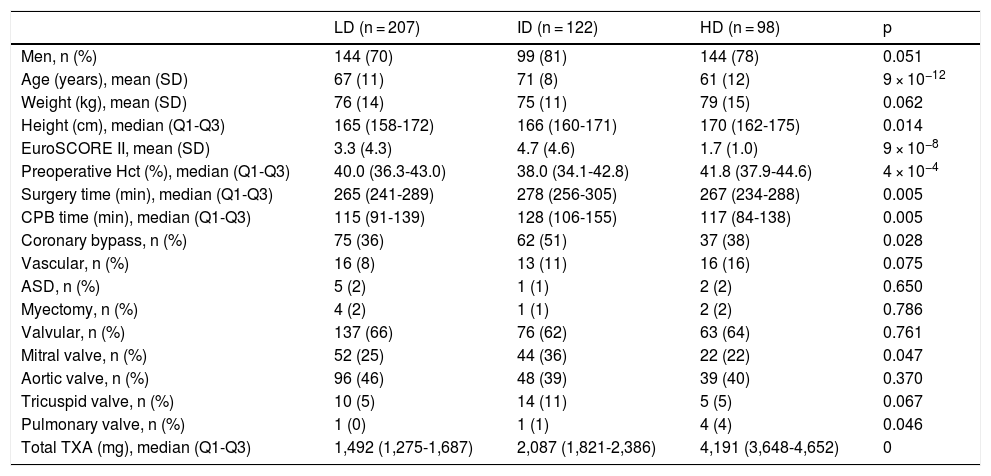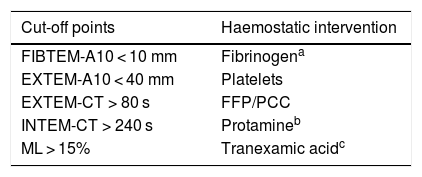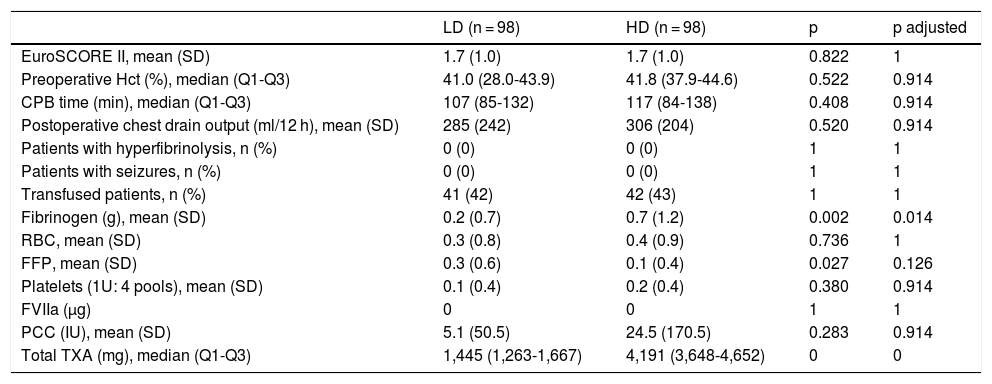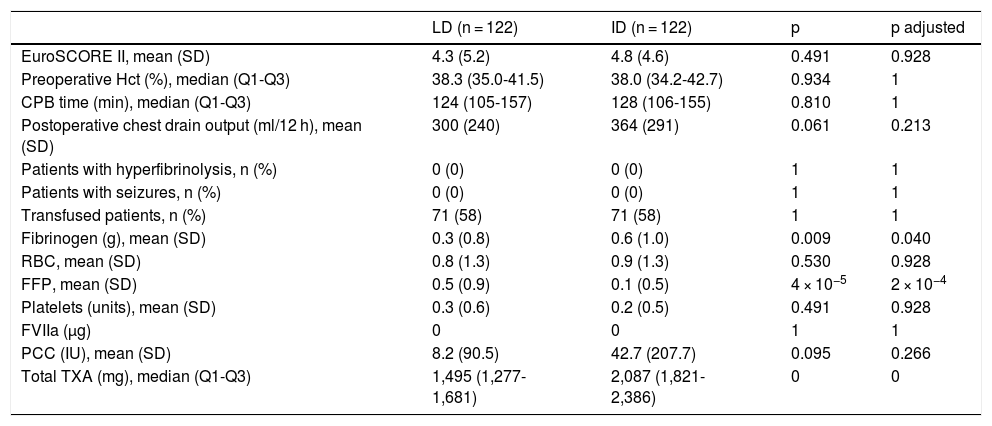Tranexamic acid is used to prevent hyperfibrinolysis and reduce postoperative bleeding and blood transfusions in on-pump cardiac surgery. We evaluate the efficacy of low or high dose tranexamic acid in a prospective cohort study conducted in Valencia.
Materials and methodsA total of 427 patients were recruited between January 2019 and January 2020, 207 in the Hospital General Universitario (low dose [LD]) and 220 in the Hospital Universitario y Politécnico La Fe (high dose [HD] and intermediate dose [ID]). We recorded the presence of hyperfibrinolysis on rotational thromboelastometry, intra- and postoperative administration of blood products, chest tube output within the first 12 h, and incidence of convulsions. Univariate and multivariate comparisons were performed. Univariate analysis of all categories was performed after propensity score matching between LD and HD and between LD and ID.
ResultsThere were no statistically significant differences in: appearance of hyperfibrinolysis, administration of blood products, postoperative chest tube output within the first 12 h, or occurrence of convulsions. Group LD received less fibrinogen than group HD (P = .014) and ID (P = .040) but more fresh frozen plasma than group ID (P = .0002).
ConclusionsAdministration of low-dose tranexamic acid is as effective as higher doses in hyperfibrinolysis prophylaxis and the prevention of postoperative bleeding in cardiac surgery.
El ácido tranexámico se utiliza para prevenir la hiperfibrinólisis y disminuir el sangrado postoperatorio y el empleo de hemoderivados en cirugía cardíaca con circulación extracorpórea. Este trabajo evalúa la eficacia de dosis bajas o altas de ácido tranexámico mediante un estudio de cohortes, prospectivo, realizado en 2 hospitales de Valencia.
Material y métodosSe seleccionaron 427 pacientes, 207 en el Hospital General Universitario (dosis bajas [DB]) y 220 en el Hospital Universitario y Politécnico La Fe (dosis intermedias [DI] y dosis altas [DA]), entre enero de 2019 y enero de 2020. Se estudió la presencia de hiperfibrinólisis por tromboelastometría rotacional, la administración de hemoderivados en el intra y postoperatorio, el débito por drenajes en las 12 primeras horas postoperatorias y la aparición de convulsiones. Se realizó un análisis comparativo univariante y multivariante. El análisis univariante de todas las categorías se llevó a cabo tras realizar un emparejamiento por índice de propensión entre DB y DA, y entre DB y DI.
ResultadosNo hubo diferencias estadísticamente significativas en la hiperfibrinólisis, la administración de concentrados de hematíes, el débito por drenajes en las 12 primeras horas ni la aparición de convulsiones. El grupo DB recibió menos fibrinógeno que el grupo DA (p = 0,014) y DI (p = 0,040). En cambio, la cantidad de plasma fresco congelado administrado al grupo DB fue significativamente superior a la del grupo DI (p = 0,0002).
ConclusionesLa administración de dosis bajas de ácido tranexámico es tan efectiva como la de dosis más elevadas en la profilaxis de la hiperfibrinólisis y la prevención del sangrado postoperatorio en cirugía cardíaca.
Artículo
Comprando el artículo el PDF del mismo podrá ser descargado
Precio 19,34 €
Comprar ahora











